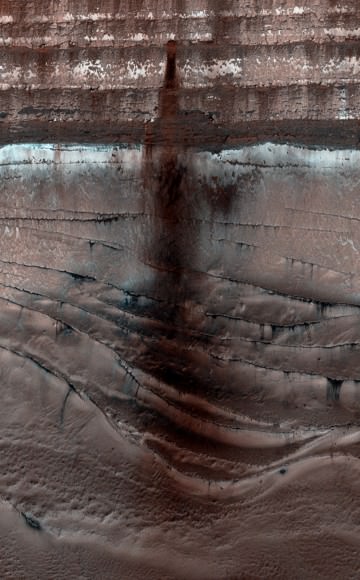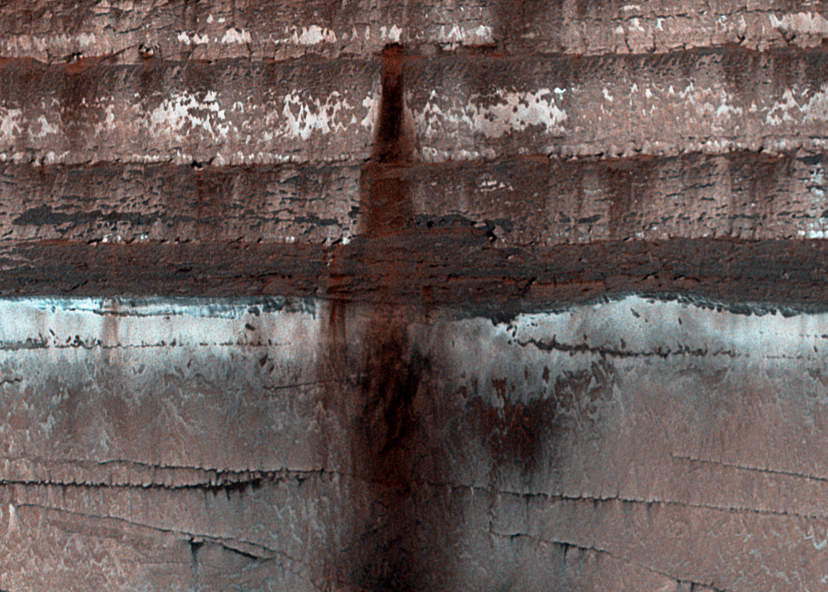Mars may be geologically inactive but that doesn’t mean there’s nothing happening there — seasonal changes on the Red Planet can have some very dramatic effects on the landscape, as this recent image from the HiRISE camera shows!

When increasing light from the springtime Sun warms up the sides of sheer cliffs made from countless layers of water and carbon dioxide ice near Mars’ north pole, some of that CO2 ice sublimes, sending cascades of loose soil and dust down to the terraced base below. This uncovered material stains the frost-covered polar surface dark, outlining the paths of avalanches for HiRISE to easily spot from orbit. (See the original HiRISE image here.)
Circling Mars since March 2006, the HiRISE camera aboard NASA’s Mars Reconnaissance Orbiter has even captured some of these polar landslides in action.
The rust-colored avalanche shown above has fallen hundreds of meters from the middle of a layered ice deposit, spreading nearly a kilometer across the frozen ridges at the base of the cliff. The view was acquired on Sept. 13, 2013.
Check out a video explaining this view and the processes that created it below, narrated by Phil Plait (aka the Bad Astronomer).
Mars’ seasonal polar caps are composed primarily of carbon dioxide frost. This frost sublimates (changes from solid directly to gas) in the spring, boosting the pressure of Mars’ thin atmosphere. In the fall the carbon dioxide condenses, causing the polar caps to reach as far as ~55 degrees latitude by late winter. By learning about current processes on a local level we can learn more about how to interpret the geological record of climate changes on Mars. (Source)


Leesee.. aside from Mars thin atmosphere and lack of planetary magnetic field to protect it from CME’s and/or other solar and cosmic radiation, there are meteoric impacts (micro and macro), planetary dust storms (With unknown consequences upon equipment or unwary astronauts) and also apparently ubiquitous ‘dust bowls’ to become entrapped or hide crevasses, pits and fractures. NOW, we see that there are pockets of sublimating CO2 that create landslides or other more eruptive/explosive events! Mars doesn’t exactly look like an enticing place to visit…
Regardless, I STILL think we need to go there to search for past and present life, but these hazards represent another reason to find and explore lava tubes, which might act as a shelter(s)?
my Aunty Sophia recently got
an awesome six month old Fiat 500 Abarth from only workin on a pc. find here
Jam20.?om